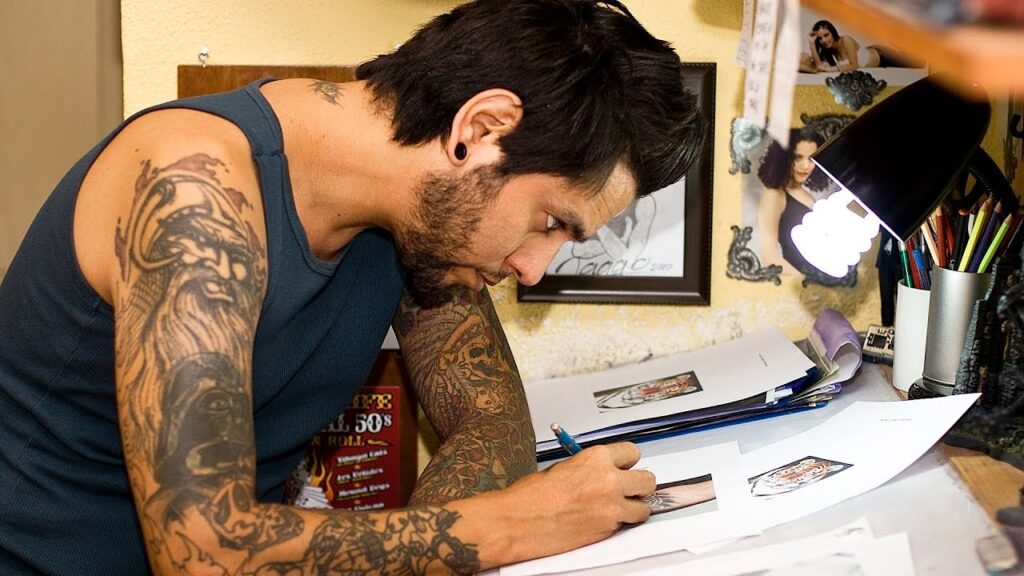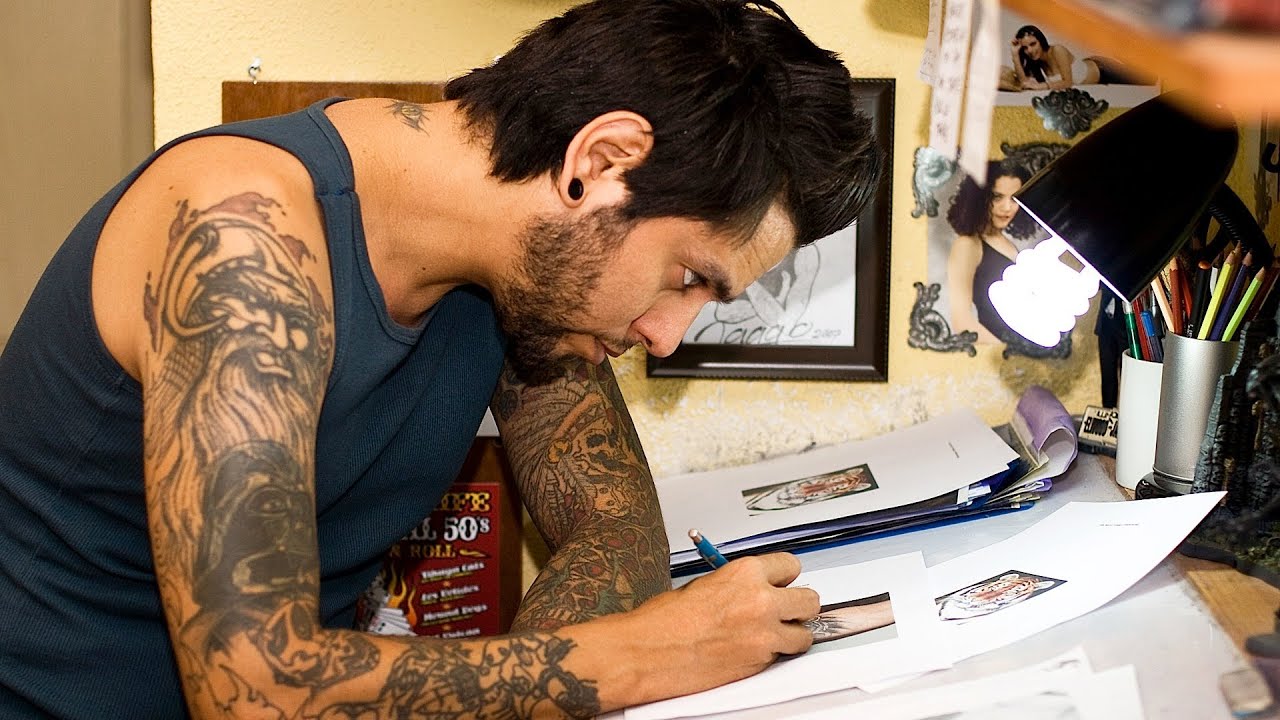
Landing Your Dream Job: A Comprehensive Guide to Becoming a Tattoo Designer
The allure of permanent art, the intimacy of skin as canvas, and the creative freedom to express oneself – these are just some of the reasons why the tattoo designer job is a coveted career path for many aspiring artists. But breaking into the industry requires more than just artistic talent. It demands a blend of technical skill, business acumen, and a deep understanding of the cultural significance of tattoos. This comprehensive guide will navigate you through the essential steps, from honing your artistic abilities to building a successful career as a tattoo designer.
Understanding the Tattoo Designer Job Market
Before diving into the specifics of skill development, it’s crucial to understand the current landscape of the tattoo designer job market. The industry is booming, with tattoos becoming increasingly mainstream. However, this also means increased competition. Successful tattoo designers are those who not only possess exceptional artistic talent but also understand the business side of things, including marketing, client communication, and studio management.
Demand and Trends
The demand for tattoo designers varies geographically. Major metropolitan areas typically offer more opportunities, but smaller towns and cities can also have thriving tattoo scenes. Staying informed about current trends is essential. Styles like realism, traditional American, neo-traditional, Japanese, and minimalist designs are consistently popular, but new trends emerge constantly. Following influential artists and studios on social media can provide valuable insights. [See also: Best Tattoo Styles of 2024]
Navigating the Competition
The competition for tattoo designer jobs is fierce. To stand out, you need to develop a unique style and build a strong portfolio. Networking within the industry is also crucial. Attending tattoo conventions, workshops, and seminars can provide opportunities to connect with established artists and potential employers.
Essential Skills for a Tattoo Designer
Becoming a successful tattoo designer requires a diverse skill set that extends beyond artistic talent. Here’s a breakdown of the essential skills you’ll need to develop:
Artistic Foundation
A strong foundation in art is paramount. This includes:
- Drawing and Sketching: Mastering the fundamentals of drawing and sketching is essential for creating accurate and compelling designs.
- Composition and Design Principles: Understanding composition, balance, color theory, and other design principles is crucial for creating visually appealing tattoos.
- Anatomy: A solid understanding of human anatomy is necessary to create tattoos that fit the body naturally and avoid distortion.
- Different Art Styles: Familiarizing yourself with various art styles, from traditional to contemporary, will broaden your creative range and allow you to cater to a wider clientele.
Technical Proficiency
Technical skills are just as important as artistic talent. This includes:
- Tattoo Machine Operation: Learning how to properly operate and maintain different types of tattoo machines is essential for creating clean and precise tattoos.
- Needle Selection: Understanding the different types of needles and their applications is crucial for achieving specific effects and avoiding skin damage.
- Sterilization and Hygiene: Maintaining a sterile environment and adhering to strict hygiene protocols is paramount to prevent infections and ensure client safety.
- Skin Preparation and Aftercare: Knowing how to properly prepare the skin before tattooing and providing clients with clear aftercare instructions is crucial for optimal healing and long-term tattoo quality.
Client Communication and Business Skills
Beyond artistic and technical skills, strong client communication and business acumen are essential for success. This includes:
- Consultation Skills: Effectively communicating with clients to understand their vision and translate it into a tattoo design.
- Active Listening: Listening attentively to clients’ ideas, concerns, and preferences to ensure their satisfaction.
- Sales and Marketing: Promoting your work through social media, online portfolios, and local events to attract new clients.
- Business Management: Managing your finances, scheduling appointments, and handling administrative tasks efficiently.
Building Your Portfolio
Your portfolio is your most valuable asset as a tattoo designer. It showcases your artistic skills, technical proficiency, and creative vision. Here’s how to build a compelling portfolio:
Quality Over Quantity
Focus on showcasing your best work, rather than including every piece you’ve ever created. A small collection of high-quality tattoos is more impressive than a large collection of mediocre ones.
Variety of Styles
Demonstrate your versatility by including tattoos in different styles, sizes, and placements. This will show potential clients that you’re capable of handling a wide range of requests.
Professional Presentation
Present your portfolio in a professional and organized manner. Use high-quality photos or videos of your tattoos, and ensure that the lighting and composition are optimal. Consider creating both a physical portfolio and an online portfolio for maximum exposure.
Include Sketches and Designs
In addition to finished tattoos, include sketches and designs in your portfolio. This will give potential clients a glimpse into your creative process and demonstrate your ability to develop original designs.
Finding a Tattoo Apprenticeship
An apprenticeship is the traditional and often the most effective way to learn the art of tattooing. It provides hands-on experience, mentorship from experienced artists, and a structured learning environment. Finding a suitable apprenticeship can be challenging, but it’s well worth the effort.
Research Potential Studios
Identify tattoo studios in your area that align with your artistic style and values. Visit the studios, observe the artists at work, and get a feel for the atmosphere. Look for studios that have a strong reputation for quality work, hygiene, and professionalism.
Prepare Your Application
Prepare a professional application that includes your portfolio, a resume, and a cover letter expressing your interest in an apprenticeship. Highlight your artistic skills, your passion for tattooing, and your willingness to learn.
Be Persistent and Professional
Finding an apprenticeship can take time and effort. Be persistent in your search, and always maintain a professional attitude. Be prepared to start at the bottom, assisting with cleaning, sterilization, and other tasks. Show your dedication and willingness to learn, and you’ll eventually earn the opportunity to start tattooing.
Building Your Career as a Tattoo Designer
Once you’ve completed your apprenticeship and gained some experience, it’s time to focus on building your career as a tattoo designer. This involves several key steps:
Continue Honing Your Skills
Never stop learning and improving your skills. Attend workshops, seminars, and tattoo conventions to stay up-to-date on the latest techniques and trends. Experiment with different styles and approaches to expand your creative range.
Build Your Brand
Develop a unique personal brand that reflects your artistic style and values. Create a professional website and social media presence to showcase your work and connect with potential clients. [See also: Social Media Marketing for Tattoo Artists]
Network and Collaborate
Network with other artists and industry professionals to build relationships and expand your reach. Collaborate on projects, attend events, and participate in online communities to increase your visibility and credibility.
Provide Exceptional Customer Service
Provide exceptional customer service to every client. Listen attentively to their needs, communicate clearly, and create a positive and memorable experience. Happy clients are more likely to return and refer others to you.
The Future of the Tattoo Designer Job
The tattoo designer job is constantly evolving, with new technologies, techniques, and trends emerging all the time. Staying ahead of the curve is essential for long-term success. This includes embracing digital tools, exploring new styles, and adapting to changing client preferences.
Ultimately, a career as a tattoo designer is a rewarding and fulfilling path for those with the passion, talent, and dedication to succeed. By honing your artistic skills, building a strong portfolio, and developing your business acumen, you can turn your dream into a reality and create a lasting impact on the world of art.
The role of a tattoo designer is not just about creating aesthetically pleasing designs; it’s about understanding the cultural significance of tattoos and respecting the client’s individual story. Each tattoo is a personal statement, a work of art that will last a lifetime. As a tattoo designer, you have the opportunity to help people express themselves and create meaningful connections through the art of tattooing. The journey to becoming a successful tattoo designer might be challenging, but the rewards are immeasurable for those who are truly passionate about this unique and evolving art form. The tattoo designer job requires constant learning and adaptation, ensuring that the artist remains relevant and competitive in the ever-changing landscape of the industry.
Securing a tattoo designer job often involves demonstrating not only artistic skill but also a strong understanding of hygiene and safety protocols. Studios prioritize artists who can maintain a clean and sterile environment to protect their clients’ health. This includes proper sterilization techniques, waste disposal methods, and adherence to local health regulations. A commitment to safety is a non-negotiable aspect of the tattoo designer job.
Finally, the tattoo designer job is about building relationships. Creating a comfortable and trusting environment for clients is essential for understanding their vision and translating it into a meaningful tattoo. This requires excellent communication skills, empathy, and a genuine interest in the client’s story. Building a strong reputation for professionalism and artistry will lead to repeat business and referrals, ensuring a long and successful career as a tattoo designer.

